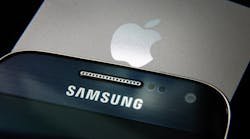The smartphone is the tech story for Americans these days: Most adults have one and its growth has overshadowed that of all other electronic gadgets.
A Pew Research Center report released Thursday found 68% of Americans use a smartphone, compared with 35% in 2011. But the figures are much higher, or “near-saturation levels” for some groups, including the 18-to-29 Millennials (86%), the 30-to-45s (83%) and people earning at least $75,000 annually (87%).
Increased smartphone adoption has come amid little or no growth in many other electronics categories such as desktop computers, gaming consoles, MP3 players and e-readers.
The tablet market has been expanding — with 45% of American adults saying they own a tablet computer, up from 4% in 2010 — but growth has cooled over the past two years, Pew researchers found. Global surveys have shown the smartphone market is still growing, led by emerging markets, while tablet sales are in decline.
An ‘All-Purpose Device’
“We don’t ask people why they do not use a particular device, but these data suggest how the rise of smartphones has been a major story in the universe of connected gadgetry,” said Lee Rainie, who heads Internet and technology research at Pew.
“These changes in device ownership are all taking place in a world where smartphones are transforming into all-purpose devices that perform many of the same functions of specialized technology, such as music players, e-book readers or even gaming devices.”
The researchers write that the rise of the smartphone “has had a major social, political and cultural impact” and “has changed the way people reach their friends, obtain data and media, and share their lives.”
Overall, 92% of American adults said they owned some type of cell or mobile phone, little changed from a year ago, but they are increasingly shifting to smartphones, Pew found.
The Pew study found 73% of American adults said they owned a desktop or laptop computer, little changed from the 71% figure in 2004 and down from a high of 80% in 2012. 40% reported having a gaming console – a number that has not changed in five years and the same percentage said they owned an MP3 player, down from a 2010 high of 47%.
Just 14% said they own a portable game device, similar to 2009 levels, and the percentage of e-reader owners fell to 19% this year from 32% in 2014.
For tablet computers, the 2015 ownership figure of 45% is “statistically the same” as the 2014 level of 42%, the report said, noting decelerating growth since tablets became popular a few years ago.
Pew found that younger adults and those from more affluent backgrounds are more likely to own tablets, including 62% of college graduates and 67% of those earnings $75,000 or more.
The report was based on two surveys: one conducted among 1,907 adults from March 17 through April 12, and a second survey from June 10 through July 12 of 2,001 adults. The margin of error for the full sample was estimated at 2.6 percentage points, and higher from some subgroups.
Global Smartphone Sales Pick Up
Global smartphone sales gained in the third quarter as major vendors ramped up special deals and financing to attract buyers, a survey showed Wednesday.
The new survey by IDC showed global smartphone sales of 355.2 million in the July-September period, up 6.8% from a year ago and the second-highest quarterly total on record.
Samsung remained the top vendor, delivering 84.5 million handsets or 23.5% of the total market, followed by Apple’s 48 million which gave the U.S. firm 13.5%. China’s Huawei cemented its hold on third place with a 7.5% market share and 26.5 million units, followed by Chinese rivals Lenovo and Xiaomi, which each captured slightly more than 5%.
IDC analysts said consumers are seeing new buying options including unlocked handsets, which can be used on several carriers, and financing plans to pay for the device over time. Apple, for example, started using the strategies earlier this year to entice buyers for its high-end iPhones.
“The vendor landscape and product offerings are really unique at the moment as many markets are seeing consumers become more aware of alternative buying options when it comes to paying for their smartphone,” IDC’s Ryan Reith said. “In mature and subsidized markets, we now have a wide range of operators offering equipment installation plans), as well as early trade-in options. At the same time the number of unlocked/off-contract offerings has increased significantly and it’s slowly starting to resonate with consumers.”
IDC said there is intense competition at the high end between Apple and Samsung, each of which introduced new models this year, as well as in the budget range.
“The third quarter placed a substantial emphasis on flagship devices as vendors tried to outclass each other in both features and design,” IDC research manager Anthony Scarsella said. “New flagship models translated to fiercer competition at the high-end for most players as many will try to challenge both Samsung and Apple for a place among the elite. However, despite the glitz and glamour at the high-end, we still expect the bulk of volume and growth to once again sprout from low to mid-range handsets, particularly in emerging markets.”
The survey showed Huawei as the fastest growing vendor, boosting sales 60.9% from last year. The firm’s partnership to produce Google’s Nexus 6P phone “could signal that Huawei is finally ready to seriously compete in the United States,” according to IDC.
Copyright Agence France-Presse, 2015




